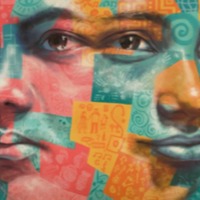
Rita
There are an estimated 145,000 people liing in conditions of modern slavery in Italy (GSI 2018). Italy is a destination, transit, and source country for women, children, and men subjected to sex trafficking and forced labour. Victims originate from Nigeria, Romania, Morocco, China, and other countries. Female victims are often subjected to sex trafficking in Italy after accepting promises of employment as dancers, singers, models, restaurant servers, or caregivers. Romanian and Albanian criminal groups force Eastern European women and girls into commercial sex. Rita was homeless when she was approached by a woman who asked her if she would like to travel and promised to take her to Europe where she could work in her supermarket. Before she left, the woman told Rita the travel costs and made her undergo a voodoo ceremony and swear an oath that she would pay back the money for the journey. As the woman accompanied Rita on the journey from Nigeria through Libya, her attitude began to change. Rita was beaten, abused, and raped by men along the way but the woman did not intervene or protect her. The journey was traumatising, and she saw many people die on the way. Once she arrived in Florence, instead of the supermarket work she was promised, Rita was forced to work as a prostitute in a brothel to pay back the money she owed. After three months of being locked up in the brothel, she escaped and is now in Germany, but she is still being threatened by the Madam in Italy.
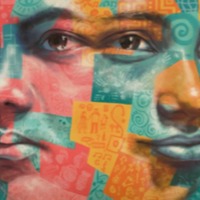
Shola
There is an estimated 48,000 people living in modern slavery in Libya (GSI 2018). Libya is a major transit destination for migrants and refugees hoping to reach Europe by sea. Human trafficking networks have prospered amid lawlessness, created by the warring militias that have been fighting for control of territories since the toppling of Muammar Gaddafi in 2011. Highly organized trafficking and migrants smuggling networks that reach into Libya from Niger, Nigeria, Chad, Eritrea, Ethiopia, Somalia, Sudan, and other sub-Saharan states subject migrants to forced labor and forced prostitution through fraudulent recruitment, confiscation of identity and travel documents, withholding or non-payment of wages, debt bondage, and verbal, physical, and sexual abuse. In some cases, migrants reportedly pay smuggling fees to reach Tripoli, but once they cross the Libyan border they are sometimes abandoned in southern cities or the desert where they are susceptible to severe forms of abuse and human trafficking. Shola was unhappy with her life in Nigeria. She wanted to study and get a job, but when she finished secondary school, her family expected her to marry, have children, and be a housewife. She decided to go to Europe to realize her plans. A woman promised to take her there, and she departed with a group of girls, taking the Libya route. Once in Libya, Shola and the other girls were told they would have to work before they crossed. They were forced into prostitution and were beaten if they refused. Shola and some others escaped from their sexual exploitation with the help of a man, but while living with him they were put to work in other people’s homes.
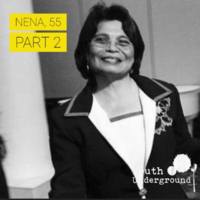
Nena
There are an estimated 403,000 people living in conditions of modern slavery in the United States (GSI 2018). The US attracts migrants and refugees who are particularly at risk of vulnerability to human trafficking. Trafficking victims often responding to fraudulent offers of employment in the US migrate willingly and are subsequently subjected to conditions of involuntary servitude in industries such as forced labour and commercial sexual exploitation. Nena was trafficked into domestic servitude at the age of 55. She had already retired from her teaching job in the Philippines and thought going to the United States would be a good opportunity to financially help her family.
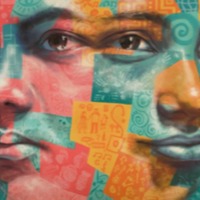
Thiri
There are an estimated 212,000 people living in modern slavery in Malaysia (GSI 2018). The majority of those exploited are migrant and undocumented workers in the country. Foreign workers constitute more than 20 percent of the Malaysian workforce and typically migrate voluntarily—often illegally—to Malaysia from Bangladesh, India, Nepal, Burma, Indonesia, the Philippines, and other Southeast Asian countries, mostly in pursuit of better economic opportunities. Some of these migrants are subjected to forced labour or debt bondage by their employers, employment agents, or informal labour recruiters when they are unable to pay the fees for recruitment and associated travel. Thiri came to Malaysia in 2007 from Myanmar without documents. He was brought to immigration officials and was told he was being deported to the Thai-Malaysian border. However, he was forced into the back of a vehicle and taken to a house where traffickers demanded money to go back to Malaysia. Those that could not pay, including Thiri were kept in the house and threatened with forced labour. Thiri and six others tried to escape and have the traffickers arrested but police were involved in the trafficking and they were taken back to the house where they were being kept. Thiri was forced to cook and clean, sell drugs, and become the traffickers’ ‘bodyguard,’ beating new arrivals who also could not pay the fee to return to Malaysia. Eventually Thiri was able to escape.
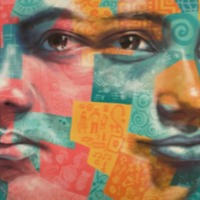
Grace
There are an estimated 136,000 people living on conditions of modern slavery in the United Kingdom (Global Slavery Index 2018). According to the 2017 annual figures provided by the National Crime Agency, 5, 145 potential victims of modern slavery were referred through the National Referral Mechanism in 2017, of whom 2,454 were female, 2688 were male and 3 were transgender, with 41% of all referrals being children at the time of exploitation. People are subjected to slavery in the UK in the form of domestic servitude, labour exploitation, organ harvesting and sexual exploitation, with the largest number of potential victims originating from Albania, China, Vietnam and Nigeria. This data however does not consider the unknown numbers of victims that are not reported. Grace was trafficked from Nigeria to the UK into forced prostitution by a local woman who used the traditional African belief of Juju to threaten her. Eventually she escaped and told the police what happened but her trafficker and the woman that sold her fled the UK.
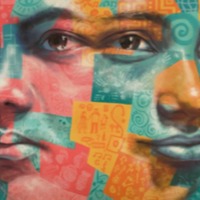
Sally
There are an estimated 403,000 people living in modern slavery in the United States (GSI 2018). Sex trafficking exists throughout the country. Traffickers use violence, threats, lies, debt bondage and other forms of coercion to compel adults and children to engage in commercial sex acts against their will. The situations that sex trafficking victims face vary, many victims become romantically involved with someone who then forces them into prostitution. Others are lured with false promises of a job, and some are forced to sell sex by members of their own families. Victims of sex trafficking include both foreign nationals and US citizens, with women making up the majority of those trafficked for the purposes of commercial sexual exploitation. In 2015, the most reported venues/industries for sex trafficking included commercial-front brothels, hotel/motel-based trafficking, online advertisements with unknown locations, residential brothels, and street-based sex trafficking. Sally was trafficked into prostitution in the state of Nebraska. She tells of her struggles being believed by her family at the time and how she continues to struggle years later with feelings of fear and distrust.
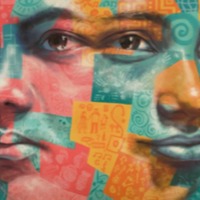
Becky
There are an estimated 403,000 people living in modern slavery in the United States (GSI 2018). Sex trafficking exists throughout the country. Traffickers use violence, threats, lies, debt bondage and other forms of coercion to compel adults and children to engage in commercial sex acts against their will. The situations that sex trafficking victims face vary, many victims become romantically involved with someone who then forces them into prostitution. Others are lured with false promises of a job, and some are forced to sell sex by members of their own families. Victims of sex trafficking include both foreign nationals and US citizens, with women making up the majority of those trafficked for the purposes of commercial sexual exploitation. In 2015, the most reported venues/industries for sex trafficking included commercial-front brothels, hotel/motel-based trafficking, online advertisements with unknown locations, residential brothels, and street-based sex trafficking. Becky was trafficked into prostitution in the state of Nebraska. She talks about her trafficking experience and stresses the importance of differentiating between those who have been trafficked and those who choose prostitution. In her own experience, failing to acknowledge this has meant that even after escape, women are still fighting to prove their point and what happened to them. Becky suggests that education in schools and among the police is important for the prevention of trafficking and in the treatment, women receive after escape.
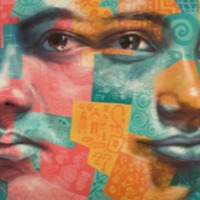
Nancy
There are an estimated 403,000 people living in modern slavery in the United States (GSI 2018). Sex trafficking exists throughout the country. Traffickers use violence, threats, lies, debt bondage and other forms of coercion to compel adults and children to engage in commercial sex acts against their will. The situations that sex trafficking victims face vary, many victims become romantically involved with someone who then forces them into prostitution. Others are lured with false promises of a job, and some are forced to sell sex by members of their own families. Victims of sex trafficking include both foreign nationals and US citizens, with women making up the majority of those trafficked for the purposes of commercial sexual exploitation. In 2015, the most reported venues/industries for sex trafficking included commercial-front brothels, hotel/motel-based trafficking, online advertisements with unknown locations, residential brothels, and street-based sex trafficking. Nancy was trafficked into prostitution, subjected to sexual abuse and violence daily. Nancy stresses the importance of education and raising awareness for both the prevention of commercial sexual exploitation and understanding how to support survivors. She highlights the need for survivors be supported by police rather than interrogated for information and have access to wider networks of support.
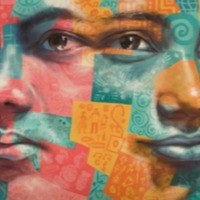
Shannon
There are an estimated 403,000 people living in modern slavery in the United States (GSI 2018). Sex trafficking exists throughout the country. Traffickers use violence, threats, lies, debt bondage and other forms of coercion to compel adults and children to engage in commercial sex acts against their will. The situations that sex trafficking victims face vary, many victims become romantically involved with someone who then forces them into prostitution. Others are lured with false promises of a job, and some are forced to sell sex by members of their own families. Victims of sex trafficking include both foreign nationals and US citizens, with women making up the majority of those trafficked for the purposes of commercial sexual exploitation. In 2015, the most reported venues/industries for sex trafficking included commercial-front brothels, hotel/motel-based trafficking, online advertisements with unknown locations, residential brothels, and street-based sex trafficking. Shannon was trafficked into forced prostitution in the state of Nebraska. Here she tells of her experience of PTSD long after being rescued from her situation and stresses the central role of therapy in the road to recovery. Shannon underlines the importance of differentiating between those who choose prostitution and those who are trafficked into prostitution for commercial sexual exploitation.
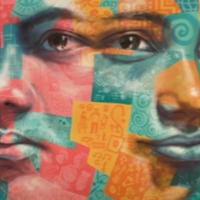
Romina
Countries in Latin America are source, transit and destination countries for trafficking in persons. People are exploited within their own countries and trafficked to other countries in the region, with Latin America being the primary source region for people trafficked to the United States. Major forms of trafficking in persons include commercial sexual exploitation of women and children, labour trafficking within national borders and among countries in the region, and the trafficking of illegal immigrants in Mexico and Central America. The two countries in Latin America and the Caribbean with the largest percentages of their population subjected to modern slavery, are Haiti and the Dominican Republic, according to the Walk Free Foundation. Romina was living on the streets with her father from the age of 9. One day her father was killed and Romina was put into the care of his friend Hugo. From the age of 13, Hugo trafficked Romina into commercial sexual exploitation. Romina was drugged and subjected to daily sexual violence until one day she was rescued during a police raid.
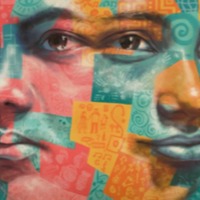
Miguel
There are an estimated 403,000 people living in conditions of modern slavery in the United States (GSI 2018). The US attracts migrants and refugees who are particularly at risk of vulnerability to human trafficking. Trafficking victims often responding to fraudulent offers of employment in the US migrate willingly and are subsequently subjected to conditions of involuntary servitude in industries such as forced labour and commercial sexual exploitation. Miguel travelled from Mexico to the United States in search of work to support his family, including his sick son. Miguel along with five others paid for assistance to cross the boarder to the US and on to Florida where they were met by their ‘boss’ who informed them they would work to pay off their debts. Miguel tells of how he was forced to work under constant threats for little pay.
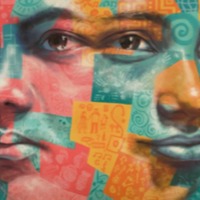
Hada
There are an estimated 58,000 people living in conditions of modern slavery in Benin (GSI 2018). The country is an origin, transit and destination country for women and children subjected to trafficking in persons, primarily for forced labour and sex trafficking. Trafficking victims most often come from low-income families, and frequently lack formal education or basic identity documents including birth certificates and national identification. Internal trafficking primarily draws children from rural areas in the north to the urban south of Benin in search of economic opportunity. Children from Benin who are subjected to trafficking externally are transported to West and Central African countries. Some parents send children to wealthier families for educational or vocational opportunities; a practice called vidomegon. Some of these children are subjected to domestic servitude. Children from neighboring countries are forced to labor on farms, in commercial agriculture (particularly in the cotton sector), in artisanal mines, at construction sites, or as street or market vendors in Benin. Hada is from the prefecture of Blitta. He is typical of many boys who go with traffickers without the knowledge of their parents and end up in the plantations of Benin where they perform long hours of difficult, hazardous and unpaid labour.
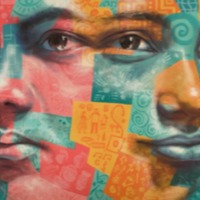
Shadrack
In 1993, Burundi’s first democratically elected president was assassinated in a coup d’état. Melchior Ndadaye, of the majority Hutu ethnic group, had sought during his three months in office to ease tensions between Hutu and the minority Tutsi, which had ruled Burundi for decades and continued to dominate the army. In response, Hutu paramilitary groups formed, and as quid pro quo attacks between Hutu and Tutsi escalated, Burundi spiraled into civil war.Among the many victims of the war were children. Indignant over Ndadaye’s death and the denial of political power the Hutu believed their due, extremist factions exhorted teenagers and even younger children to join their ranks, and for more than a decade, thousands of children lived in Burundi’s forests in deplorable conditions, raiding villages, camps, and military installations, both suffering and committing horrific violence. Many were girls kept as sexual slaves for older soldiers. Shadrack joined the FNL rebellion after the army came to his village and killed a number of his relatives and neighbours, he was 13 years old. Shadrack tells of his experience as a child soldier and how he came to leave the rebellion.
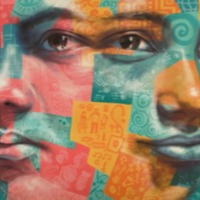
Sesuna
There are an estimated 518,000 people living in modern slavery in Egypt, 465,000 in Sudan and an estimated 451,000 in Eritrea (GSI 2018). Since 2006 tens of thousands of Eritreans fleeing widespread human rights abuses and destitution have ended up in Egypt’s Sinai Peninsula. Until 2010, they passed through Sinai voluntarily and generally without any problems and crossed in to Israel. However, since then, Sudanese traffickers have kidnapped Eritreans in eastern Sudan and sold them to Egyptian traffickers in Sinai who have subjected at least hundreds to violence in order to extort large sums of money from their relatives. Sesuna* was travelling to Israel for work when she was kidnapped by a smuggler in Sinai and raped.
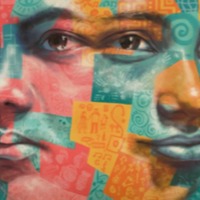
Noel Gomez
There are an estimated 403,000 people living in modern slavery in the United States (GSI 2018). Sex trafficking exists throughout the country. Traffickers use violence, threats, lies, debt bondage and other forms of coercion to compel adults and children to engage in commercial sex acts against their will. The situations that sex trafficking victims face vary, many victims become romantically involved with someone who then forces them into prostitution. Others are lured with false promises of a job, and some are forced to sell sex by members of their own families. Victims of sex trafficking include both foreign nationals and US citizens, with women making up the majority of those trafficked for the purposes of commercial sexual exploitation. In 2015, the most reported venues/industries for sex trafficking included commercial-front brothels, hotel/motel-based trafficking, online advertisements with unknown locations, residential brothels, and street-based sex trafficking. Noel was coerced into becoming a prostitute in Seattle when she was 16. She spent 15 years in the life, trying to escape numerous times and being subjected to physical and sexual abuse on a daily basis. When she was finally able to escape, Noel managed to get a job, a degree and founded her own organisation to help other women and girls subjected to forced sexual exploitation in the city.
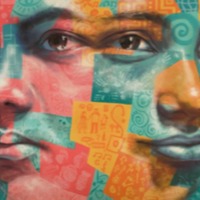
Srey Neth
There are an estimated 261,000 people living in modern slavery in Cambodia (GSI 2018). The country was renowned as a sex tourism destination in the 1990s and this legacy is still prevalent today with women and girls trafficked within the thriving sex industry in Cambodia's major cities. Despite significant attempts to curb CSE, NGOs report the industry has been pushed underground and sex offenders are still able to purchase sex with children through an intermediary rather than more overt selling of sex in brothels. Boys and young men are also vulnerable to sexual exploitation, with many entering the massage industry due to a lack of training and skills. Srey Neth is a young Cambodian victim of human trafficking. In this story she speaks of her experience transitioning from victim to survivor. At 14 she was sold by her mother to a pimp for $300; a week later he sold her virginity for the same price then he forced her to serve 10-20 men per night afterwards. Her refusal was met with beatings or electrocution. Srey Neth was later rescued by police and a non-governmental organization. During her recovery, which unsurprisingly has taken more than five years, she was diagnosed with HIV.
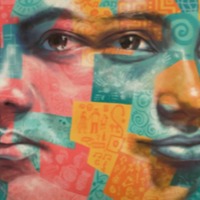
Anita D
The Global Slavery Index 2018 estimates that on any given day there were nearly 8 million people living in modern slavery in India. The GSI 2018 reports an emerging trend in northeast India where organised trafficking syndicates operate along the open and unmanned international borders, duping or coercing young girls seeking employment outside their local area in to forced sexual exploitation. Many women and girls are lured with the promise of a good job but then forced in to sex work, with a 'conditioning' period involving violence, threats, debt bondage and rape. Anita D was 19 years old when she took a job as a maid in India. However, upon arrival she discovered she would be forced to work in a brothel. Anita was locked in a room for three years and forced to provide sexual services for up to 40 men a day. Anita tells of the importance of status to survival in the brothel, how she became a madam, and how finding religion showed her the path to freedom.
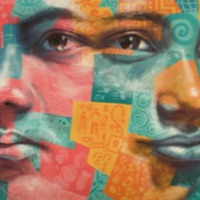
Elena
The Global Slavery Index 2018 estimates that on any given day in 2016, an estimated 3.6 million men, women and children were living in modern slavery in Europe and Central Asia. People are subjected to exploitation in forced labour, debt bondage and forced sexual exploitation. Government response in Europe is particularly strong with a number of regional bodies holding them account and monitoring responses, and while countries in Central Asia have taken steps to tack modern slavery, more needs to be done. Elena and her family were struggling to get by, being forced to steal food to have something to eat, when she was offered a way for her family to be taken care of and find work. However, instead of a job, F and her family were forced to beg for their recruiters. Though F tried to escape, she was caught by the traffickers and threatened with her life if she tried to leave again.
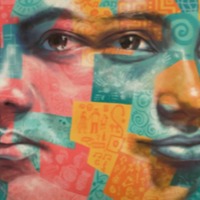
Andrei A
It is estimated that there are 105,000 people living in conditions of modern slavery in Spain (GSI 2018). Spain is a source, transit and destination country for men, women and children subjected to forced labour and sex trafficking. Women from from Easter Europe, particularly Romania, South America and Nigeria are subjected to sex trafficking, while men and women from South and East Asia are subjected to forced labour in the textile, agricultural, construction, industrial and service sectors. Unaccompanied migrant children continue to be trafficked for sexual exploitation and forced begging. Andrei took up an offer for a job in Spain, however upon arrival he was forced to beg on the streets under constant surveillance and threats.
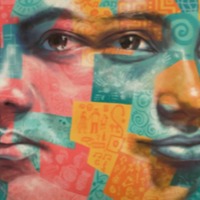
Sadhna
The Global Slavery Index 2018 estimates that on any given day there were nearly 8 million people living in modern slavery in India. The GSI 2018 reports an emerging trend in northeast India where organised trafficking syndicates operate along the open and unmanned international borders, duping or coercing young girls seeking employment outside their local area in to forced sexual exploitation. Many women and girls are lured with the promise of a good job but then forced in to sex work, with a 'conditioning' period involving violence, threats, debt bondage and rape. Sadhna was 11 years old when her father passed away. Her family was left with no money in their village, so they moved to Kolkata in search of work. Sadhna was struggling as a house cleaner when a local woman offered her a new job. Sadhna followed the woman to a house filled with strange men and beer. She was given a glass of water and immediately fell unconscious. She woke to find she had been raped and was now to be sold for sex from a private brothel, she was 14 years old. Sadhna was rescued by IJM and now shares her story with other girls in India.